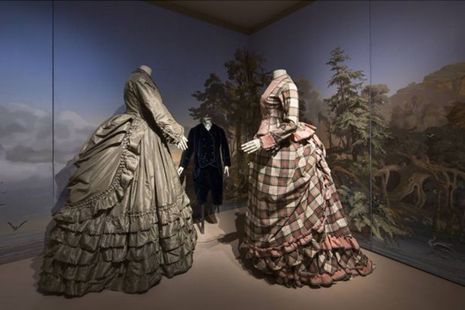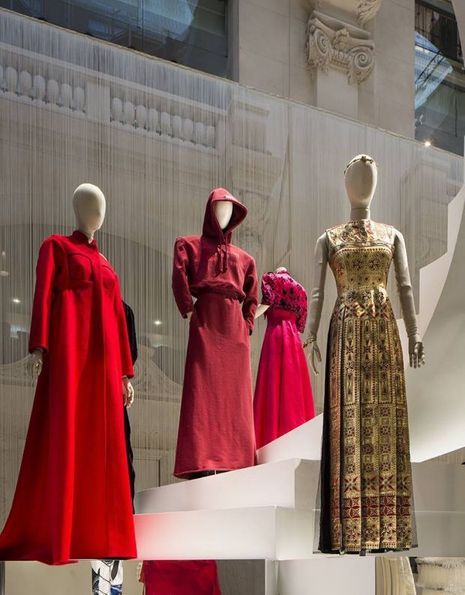Fashion forward: Three centuries of fashion at the Arts Décoratifs
Everything starts with an open window, the forward Fashion exhibition at the Arts Deco started in the 17th century. A staging studied, like a picture, the clothes displayed on mannequins are articulated "in dialogue" with parts of their day: tapestries, mirrors, wood paneling, as explained Pamela Golbin, general curator, fashion and textiles, who mounted this exhibition alongside Marie-Sophie Carron de la Carriere and Denis Bruna.
A "time travel" of the regency era to the present day through the creations of Charles Frederick Worth, the first designer to sign his clothes as works of art. The exhibition lives from age to age, winds through dimly lit corridors, between two alarm sounds - this is the first exhibition of the museum where there is no glass to separate rooms and the visitor - until the Nave. There, in a bright white room stand gigantic twisted staircases designed by Jérôme Kaplan on which rise majestically the most beautiful creations of each decade from 1939 to 2016, always in the spirit of "dialogue between rooms" .(cheap formal dresses australia)

Renaissance men's fashion
Fashion forward introduces "the man peacock" of the 17th century. reflective clothing opulence at the royal era, gilding flashy, and details worked. Attention for male clothing that will eventually be lost as and measuring our progress over time. The man who was the center of all the attention, which created an identity through his hunting jackets, costumes and even his robes cured, will gradually fade.
As forgot couturiers, who was accompanied to the woman is sober and discreet for the showcase. The gilding, the colors give way to simple black and marine blue suits, without extravagance. It was not until 1960 that he again become subject of creation and innovation with unisex dresses Jacques Esterel and masculine creations by Thierry Mugler. In 2000, with Hedi Slimane for Saint Laurent and Raf Simmons, the menswear creates an identity, by "radically opposed views" of the two creators.
The echo mode to history
Fashion becomes from the French Revolution a true mark of identity and claim. By his cuts and colors, it determines the values and personality of the man and woman. Women's clothes abandon any structure and conventions leaving only free and fluid draped, men are adorned with red, highly revolutionary. With the arrival of Napoleon, clothing and fashion back to a stricter and more defined silhouette.

Liberation of women
Along the route, the female mode changes to impose its place. Her outfits are expanding to take possession of the space, with blows of crinoline and extremely puffy dresses(semi formal dress).
Femininity embodied by a figure to the marked size into the 1940 Fashion forward takes us towards liberation of women through iconic creations. Christian Dior Bar suit, the mermaid figure all sequins gilded Balmain, Balenciaga innovations for a silhouette any volume without using a corset or underwear, the Chanel suit, "uniform of any modern woman 'exposed here in its version of 1953 in gold lurex.
The woman was reborn in 1965 with "Courrèges bomb" that female trouser suit for spring-summer 1965 collection absolutely unique designer whose donated to the Museum of Decorative Arts. A holding thought "for the modern woman, the woman who wanted to move and feel his youth." Pants that will remain rare in the creations. We advance then slowly on the way of liberation starts with the arrival of Pacco Rabane and cape 1967 square Plexiglas where are pressed flowers, chains and accessorized with ostrich feathers.
This is from 1980 with the Japanese Rei Kawakubo at Comme boys we discover a "new definition of women" without significant neck or waist. Since then, she continues to reinvent itself, Vivienne Westwood and his wife in shapes and curves, the "creativity of the French quartet": Claude Montana, Thierry Mugler, Azzedine Alaïa and Jean Paul Gaultier. We end with the young clothing: a dress silhouettes echo the beginning of our journey with her cup but with materials and modern message it says "the bridges I burn light my way," a way to illustrate this constant renewal of fashion, even after three centuries.